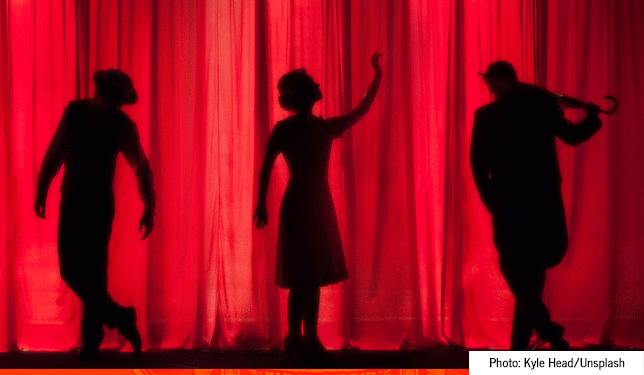Fun Facts: Ēostre and Easter
With Easter and Earth Day occurring around the same time this year (April 21 and April 22), we thought it would appropriate to discuss the origins of Easter. You probably know that Easter is a pagan holiday altered by Christianity. Who you may not know about is Ostara (Ēostre), the goddess of the dawn and spring that the holiday gets its name from.
Easter is where we’ll begin. Easter is a Christian holiday celebrating the resurrection of Jesus Christ. Curiously, this holiday connects other religions together, recognizing the Judaic Passover holiday. What’s most confusing about Easter are all the colored eggs and bunnies. What do they represent? In Christianity, the egg represents the Tomb of Christ. Eggs that are dyed red tend to represent the blood of Christ, and the cracking and peeling of an egg represent opening the Empty Tomb. The more you know, right?
If we look at the old religions before Christianity, eggs, along with hares and rabbits, represent fertility and rebirth. One that can be compared is the Wiccan holiday of the Ostara Festival. Ostara is elebrated around or during the spring equinox in March. 
It is believed that Easter got its name from the Anglo-Saxon Goddess Ostara, also known as Ēostre. Ostara is oft compared to the Sumerian goddess Ishtar, the goddess of Fertility. Ēostre is the goddess of the dawn, spring, fertility, and rebirth. As the story goes, Ēostre had once saved a bird from the winter cold. The bird’s wings had frozen and could not fly away. So she changed the bird into a rabbit, and since the rabbit was once a bird, it could lay eggs. Hence the Easter Bunny and egg connection.
Modern thought says that Ēostre is more mythical than magical and invented from the festival of Ostara. It may possible since most gods and heroes of old stem from oral stories. Stories of Ēostre are older than expected, and she almost became a forgotten goddess. Due to neo-pagan religions, the festive holiday in the spring, and the writings and media that feature her, Ēostre is becoming popular again.
You may have seen her recently on the TV show American Gods, played by the incomparable Kristin Chenoweth. Also, she would be hard to forget since we also get the words east and estrogen derived from her name.
The more popular Ēostre becomes, the more comparative gods and goddess are seen. Can you imagine Easter being called something else? Like Persephone or Bastet? We honor all (or at least most) of the gods and goddess that bring the spring, fertility, and rebirth to Earth. Check out this list of deities that relate to Ēostre.
- Iduna: Sometimes spelled Idun or Idunn, is the Norse goddess of spring, youth, and rejuvenation.
- Ishtar: The Sumerian goddess of war and sexual love, and plays the role of a fertility figure.
- Demeter and Persephone: This Greek mother-daughter duo share roles. Demeter is the goddess of harvest and fertility while Persephone is the goddess of spring and the Queen of the Underworld. Once Persephone leaves her mother to be in the Underworld, Demeter mourns for her, causing fall and winter.
- Flora: The Sabine-derived Roman goddess of flowers and spring. She is a symbol of nature and the flowering of plants.
- Freya: Also spelled Freyja, this Norse goddess of love is also associated with fertility, sex, lust, beauty, sorcery, gold, war, and death.

- Brigid: Being a member of the Tuatha Dé Danann and suggested to be a triple deity, this Celtic goddess of the dawn is honored at the Imbolc festival (the beginning of spring).
- Blodeuwedd: This Welsh goddess of spring and the owl was created from flowers broom shrubs, meadowsweet flowers, and oak trees.
- Dziewanna: The Slavic goddess of the wild nature, the hunt, forests, and agriculture. She has also been referenced as the goddess of spring.
- Hare Ke: This is the West African goddess of the sweet waters. She brings the rains that bring fertility to the land.
- Sita: The Hindu goddess of spring, agriculture, and the earth.
- Bastet: This daughter of Ra is the Egyptian goddess of fertility, childbirth, cats, and domesticity, just to name a few of her duties. She is also known as the Distant Goddess because she leaves Ra and returns to bring transformation.
We at Bookmans hope you enjoyed our little fun fact for the month of Easter and Earth Day. Happy Easter and enjoy your time with friends and family this spring and coming year.
Written by Sky. D. (Customer Service, Bookmans Mesa)
*Note: If you like the art featured here and you want to use it for the blog, the artist is Josephine Wall (personally one of my favorite artists). I found her work on her website https://josephinewall.co.uk/art-gallery/.
Related Posts
Categories
- Art (13)
- Bookie Blog (441)
- Community Events (272)
- Contests & Giveaways (251)
- Core Values (197)
- Films (17)
- Games (46)
- gifts (33)
- In Our Stores (572)
- Inspiration (115)
- Job Postings (2)
- Merchandise (399)
- movie recommendastions (1)
- Musical Notes (243)
- News (176)
- Personality (4)
- Play: A Gamer's Blog (105)
- Quiz (16)
- Reel Chat (287)
- Style (22)
- Tips & tricks (46)
- Uncategorized (183)




